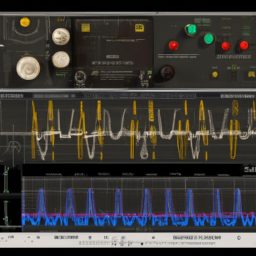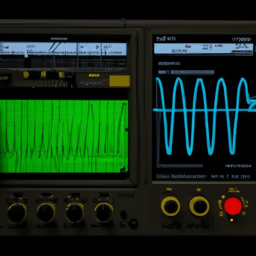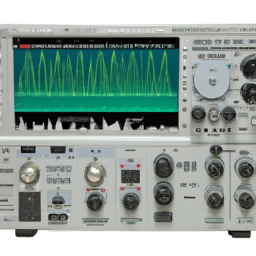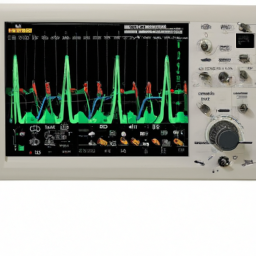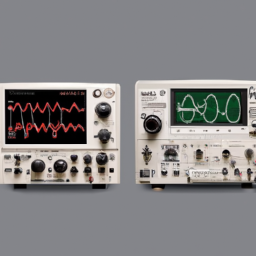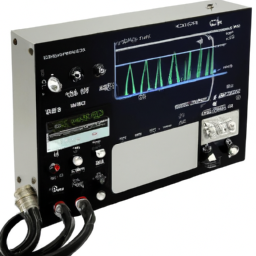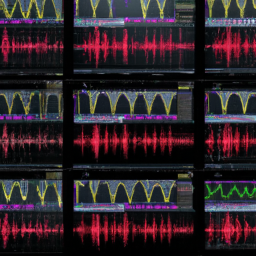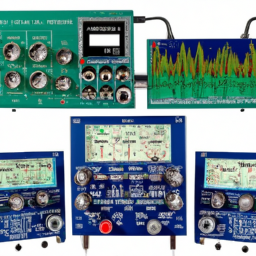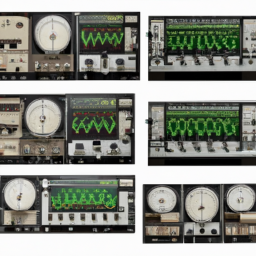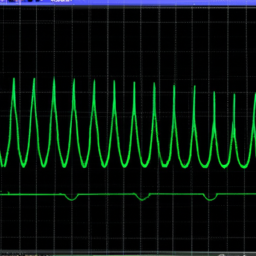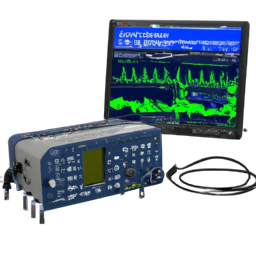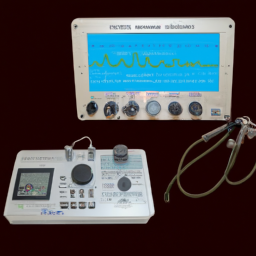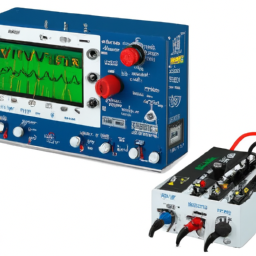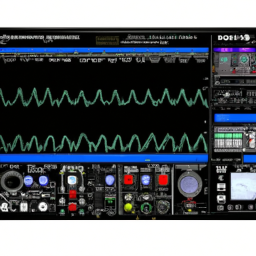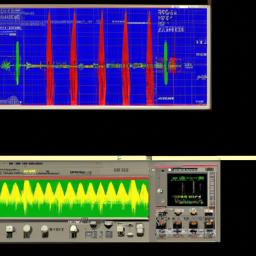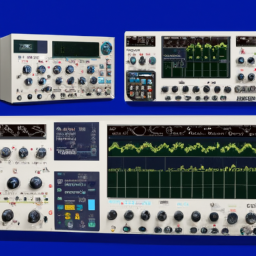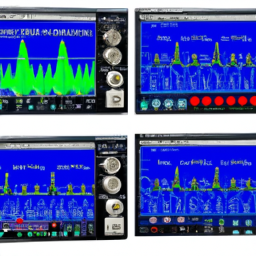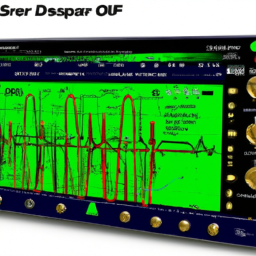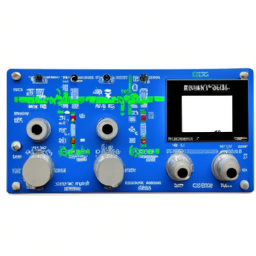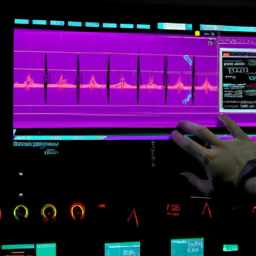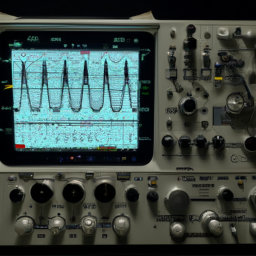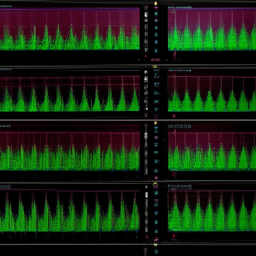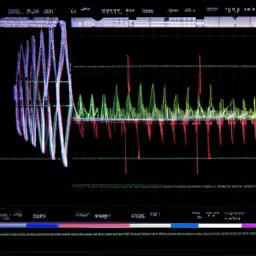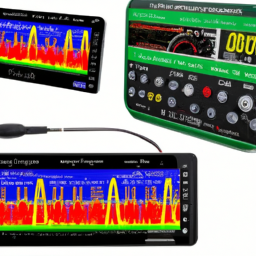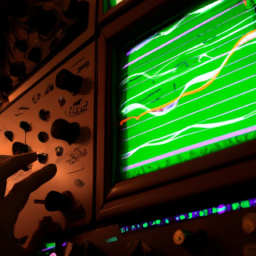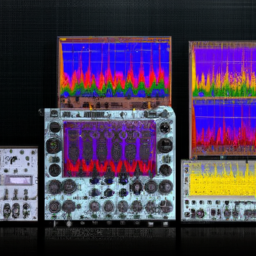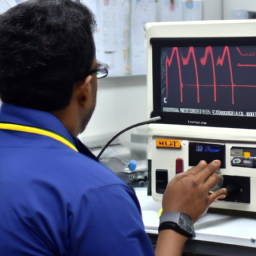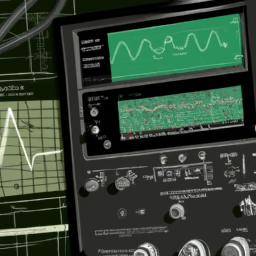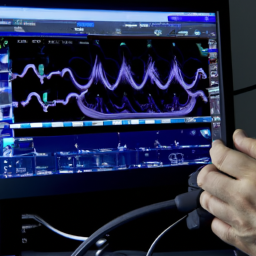Step into the realm of electronic measurement tools, where the dance between precision and innovation takes center stage. In this vibrant arena, two contenders vie for the title of the ultimate oscilloscope: analog and digital.
Each possesses its own unique set of qualities, catering to a wide array of applications. As you embark on your journey to find the perfect oscilloscope for your needs, allow us to illuminate the path ahead.
Picture yourself in a world of timeless elegance, where the warm glow of vintage technology meets the artistry of the past. Analog oscilloscopes, with their classic charm and simplicity, offer a nostalgic embrace that resonates with the purists among us.
On the other hand, digital oscilloscopes, the modern marvels of our digital age, beckon with their advanced features and unparalleled versatility.
In this article, we will delve into the intricacies of these two oscilloscope giants, exploring their strengths and weaknesses, so you can make an informed decision. Let us guide you through the labyrinth of choices and help you uncover which oscilloscope is better suited for your unique application.
Key Takeaways
- Analog oscilloscopes offer real-time waveform display, wide bandwidth, and high vertical resolution, while digital oscilloscopes offer increased accuracy, advanced triggering options, signal processing capabilities, and easy waveform storage and analysis.
- Digital oscilloscopes have a wider bandwidth range, higher sample rates, larger memory depths, and built-in signal analysis tools compared to analog oscilloscopes.
- Analog oscilloscopes are reliable tools for basic signal visualization and analysis, while digital oscilloscopes provide higher accuracy and advanced functionality for precise analysis of complex signals.
- Investing in a digital oscilloscope allows for adaptation to future requirements and ensures equipment remains up-to-date with industry advancements.
Understanding the Basics: Analog Oscilloscopes
To truly grasp the fundamentals of analog oscilloscopes, you must familiarize yourself with their basic components and principles of operation. Analog oscilloscope technology is based on the use of cathode ray tubes (CRTs) to display waveforms. These CRTs work by sending a beam of electrons onto a fluorescent screen, which creates a visual representation of the signal.
Analog oscilloscopes have a range of features that make them versatile tools for various applications. They offer real-time waveform display, allowing you to see the shape, amplitude, and frequency of a signal. Additionally, analog oscilloscopes provide a wide bandwidth and high vertical resolution, enabling you to accurately analyze signals.
By understanding analog oscilloscope technology and its features, you can determine if it’s the right choice for your application.
Embracing the Digital Age: Digital Oscilloscopes
Embrace the digital age with a digital oscilloscope, where you can capture waveforms with a sampling rate of up to 50 GHz. Digital oscilloscopes offer advanced features and data analysis capabilities that can greatly enhance your application.
Here are four reasons why digital oscilloscopes are a great choice:
-
Increased accuracy: Digital oscilloscopes provide precise measurements with high resolution and accuracy, allowing you to analyze waveforms with greater precision.
-
Advanced triggering options: Digital oscilloscopes offer a wide range of triggering options, such as edge triggering, pulse width triggering, and serial bus triggering, enabling you to capture specific events with ease.
-
Signal processing capabilities: With digital oscilloscopes, you can perform various signal processing functions, such as FFT analysis, filtering, and math functions, to gain deeper insights into your waveforms.
-
Easy waveform storage and analysis: Digital oscilloscopes allow you to store and analyze waveforms digitally, making it convenient to compare, save, and share data for further analysis.
Digital oscilloscopes offer advanced features and data analysis capabilities that make them a superior choice for your application.
Choosing the Right Oscilloscope for Your Application
Make sure you pick the perfect oscilloscope that suits all your needs! When it comes to choosing the right oscilloscope, there are a few factors you need to consider.
One of the most important aspects is cost. Analog oscilloscopes are generally cheaper compared to their digital counterparts. If you’re on a tight budget, an analog oscilloscope might be the better option for you. However, if you require more advanced features and functionalities, a digital oscilloscope may be worth the investment.
Digital oscilloscopes offer greater accuracy, storage capabilities, and the ability to perform complex measurements. Additionally, they provide better waveform visualization and analysis tools.
Ultimately, the choice between analog and digital oscilloscopes depends on your specific application requirements and budget constraints.
Cost and Budget Considerations
When considering the cost and budget for an oscilloscope, it’s important to look at the price range of both analog and digital options.
Analog oscilloscopes generally tend to be more affordable, with entry-level models starting as low as a few hundred dollars.
On the other hand, digital oscilloscopes can vary in price depending on their features and capabilities, ranging from a few hundred dollars to several thousand dollars for high-end models with advanced functionalities.
Price Range of Analog Oscilloscopes
If you’re on a tight budget, you might want to consider going for an analog oscilloscope since they typically come with a more wallet-friendly price tag. Analog oscilloscopes are known for their simplicity and cost-effectiveness. They have basic features but can still perform well in many applications.
They provide real-time measurements of voltage signals, allowing you to observe waveforms and analyze signals. Although they may not have all the advanced features of digital oscilloscopes, such as storage and advanced triggering capabilities, analog oscilloscopes can still be reliable tools for basic signal visualization and analysis. They are a popular choice among hobbyists and beginners due to their affordability and ease of use.
So, if you’re looking for a budget-friendly option and don’t require advanced features, an analog oscilloscope could be a suitable choice for your application.
Price Range of Digital Oscilloscopes
Digital oscilloscopes are often pricier than their analog counterparts, but they offer a wide range of advanced features and capabilities that make them a valuable investment for professionals and enthusiasts alike. When considering the price range of digital oscilloscopes, it’s important to compare the features and specifications they offer.
Here are some factors to consider when buying an oscilloscope:
- Bandwidth range: Digital oscilloscopes usually have a wider bandwidth range compared to analog oscilloscopes, allowing for more accurate measurements.
- Sample rate: Digital oscilloscopes have higher sample rates, enabling them to capture fast and transient signals more effectively.
- Memory depth: Digital oscilloscopes have larger memory depths, allowing for longer data capture and analysis.
- Signal analysis capabilities: Digital oscilloscopes often include built-in signal analysis tools, such as FFT, which can be useful for analyzing complex waveforms.
Considering these factors, digital oscilloscopes are better suited for applications that require advanced features and precise measurements.
User Experience and Learning Curve
When it comes to analog oscilloscopes, ease of use is a key advantage. You’ll find that navigating the controls and interpreting the waveform on an analog oscilloscope is straightforward and intuitive.
However, if you’re considering a digital oscilloscope, there may be a learning curve involved in understanding its advanced functionality and features.
Ease of Use with Analog Oscilloscopes
You’ll find analog oscilloscopes to be incredibly user-friendly, allowing you to effortlessly navigate and interpret waveform displays. Learning analog oscilloscope functionality is relatively simple, as these devices have fewer features and controls compared to digital oscilloscopes. This simplicity makes it easier for beginners to understand and use analog oscilloscopes, without feeling overwhelmed.
Additionally, the analog display of waveforms on a CRT screen provides a more intuitive and immediate understanding of the signal’s characteristics, compared to the digital representation on a screen. The real-time nature of analog oscilloscopes also allows for easy observation of transient events, as the waveform is continuously displayed.
Overall, the ease of use and intuitive nature of analog oscilloscopes make them a great choice for those starting out or for applications that require quick and simple waveform analysis.
Learning Digital Oscilloscope Functionality
Now that you’ve become familiar with the ease of use of analog oscilloscopes, it’s time to dive into the realm of digital oscilloscope functionality. Digital oscilloscopes offer a wide range of advanced features that can greatly enhance your measurements and analysis.
With a digital oscilloscope, you can explore capabilities such as advanced triggering options, waveform math functions, and automatic measurements. These features allow for more precise analysis of complex signals and make it easier to capture and analyze waveforms in real-time.
Additionally, digital oscilloscopes provide higher accuracy compared to their analog counterparts, ensuring that you obtain more reliable measurement results. So if you want to take your measurements to the next level and compare the performance of analog and digital oscilloscopes, it’s time to explore the advanced features and accuracy offered by digital oscilloscopes.
Nested Bullet Point List:
- Advanced triggering options
- Edge triggering
- Pulse width triggering
- Runt triggering
- Waveform math functions
- Addition
- Subtraction
- FFT
- Automatic measurements
- Peak-to-peak voltage
- Frequency
- Rise time
Future-Proofing Your Investment
By future-proofing your investment with an analog or digital oscilloscope, you’ll be equipping yourself with a powerful tool that will keep you ahead of the curve for years to come. When it comes to upgrading options and compatibility concerns, digital oscilloscopes offer significant advantages. With ever-evolving technology, analog oscilloscopes may become outdated and limit your ability to work with newer systems. On the other hand, digital oscilloscopes provide firmware updates and software enhancements, ensuring compatibility with the latest protocols and standards. To illustrate the benefits, consider the following table:
| Upgrading Options | Analog Oscilloscope | Digital Oscilloscope |
|---|---|---|
| Firmware Updates | No | Yes |
| Software Enhancements | No | Yes |
| Compatibility with Latest Protocols | Limited | High |
| Future-Proofing | Low | High |
Investing in a digital oscilloscope not only allows you to adapt to future requirements but also ensures that your equipment remains up-to-date with the latest advancements in the industry.
Frequently Asked Questions
Can analog oscilloscopes be used for all types of applications, or are they limited in their capabilities?
Analog oscilloscopes have certain limitations that make them less suitable for certain applications. They have a lower bandwidth and limited storage capacity, which can hinder their ability to accurately capture and analyze complex signals.
On the other hand, digital oscilloscopes offer numerous benefits such as higher bandwidth, greater storage capacity, and advanced features like signal filtering and mathematical functions. These capabilities make digital oscilloscopes more versatile and suitable for a wider range of applications.
Are digital oscilloscopes more accurate and precise than analog oscilloscopes?
Digital oscilloscopes are generally more accurate and precise than analog oscilloscopes. This is due to several factors that influence measurement accuracy.
In digital oscilloscopes, noise is reduced because the signal is converted to a digital format. Additionally, the bandwidth and sampling rate of digital oscilloscopes can be adjusted, allowing for more precise measurements.
Overall, when it comes to performance comparison, digital oscilloscopes offer higher accuracy and precision compared to analog oscilloscopes.
How do I determine the bandwidth requirement for my application when choosing an oscilloscope?
To determine the bandwidth requirement for your application, consider two factors affecting oscilloscope selection.
First, analyze the signal you’ll be measuring. Look at its highest frequency component as it determines the minimum bandwidth needed.
Second, consider the rise time of your signal. Divide 0.35 by the rise time to find the approximate bandwidth required.
By understanding these factors, you can accurately determine the bandwidth requirement for your application when choosing an oscilloscope.
Are there any advantages to using an analog oscilloscope over a digital one in certain scenarios?
In certain scenarios, there are advantages to using an analog oscilloscope. For example, analog oscilloscopes have a faster response time, allowing for more accurate measurements of rapidly changing signals. They also provide a continuous waveform display, making it easier to analyze signal behavior.
However, analog oscilloscopes have limitations in certain applications, such as limited storage capabilities and the inability to capture and analyze digital signals.
Can digital oscilloscopes handle high-frequency signals better than analog oscilloscopes?
Digital oscilloscopes have certain limitations when it comes to handling high-frequency signals. These limitations arise due to the sampling rate and bandwidth of the digital oscilloscope.
On the other hand, analog oscilloscopes have the advantage of being able to handle high-frequency signals better since they don’t suffer from the same sampling rate and bandwidth limitations. This makes analog oscilloscopes a preferred choice for applications that involve high-frequency signals.
Conclusion
So, when it comes to choosing between an analog and digital oscilloscope for your application, the answer is clear: digital is the way to go.
While analog oscilloscopes may have their nostalgic appeal, the digital age has brought us advanced features, greater accuracy, and more flexibility.
Plus, with the ever-evolving technology, digital oscilloscopes are better equipped to handle future advancements.
Don’t let the initial cost deter you, as the long-term benefits and user-friendly interface make it a worthwhile investment.
Embrace the digital revolution and take your application to the next level.


